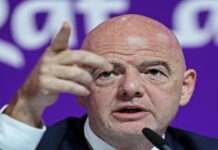With his decision to deploy more than 5,000 troops to the US-Mexico border, President Donald Trump has ordered more military personnel to the US southwest than he has serving in some of the world’s most contentious combat zones.
Senior military officers have defended the deployment on national security grounds but the mission — dubbed Operation Faithful Patriot — raises a slew of questions, with many veterans condemning it as a political stunt by a President eager to fire up his political base just days away from the midterm elections.
“Donald Trump thinks unarmed people who are fleeing horrors and are still 1,000 miles away are a national security threat a week before election day?” said Will Fischer, a former Marine who now works for the VoteVets, a progressive veteran’s organization.
“I don’t think so,” Fischer said. “It’s a political ploy to blow upon the embers of racism and nativism, and he is using the military again as a political prop to advance his own agenda”
Fischer and other veterans point to the unknown cost to taxpayers, given that much smaller deployments of National Guard to the border have cost hundreds of millions of dollars. They also question the cost the military will bear, as the operation pulls troops away from training, other missions and their families. And then, they say, there’s the murky legality of the mission, its scope and its purpose.
Still, the Pentagon appears ready to move forward with the deployment and military officials said Tuesday that the number of troops is likely to exceed 5,200, a total that will surpass the number of US military personnel currently fighting what remains of ISIS in Iraq and Syria.
US troops will join over 2,000 National Guardsmen who are already at the border, meaning upwards of 7,000 American forces will be mobilized to stop Central American migrants that are still some 900 miles away from the border and weeks away from arriving in the US.
Currently, 5,239 troops are scheduled for deployment to the border but that number will likely grow, according to Gen. Terence O’Shaughnessy, the head of Northern Command, who said that the Pentagon does not yet know how many more forces might be added.

















